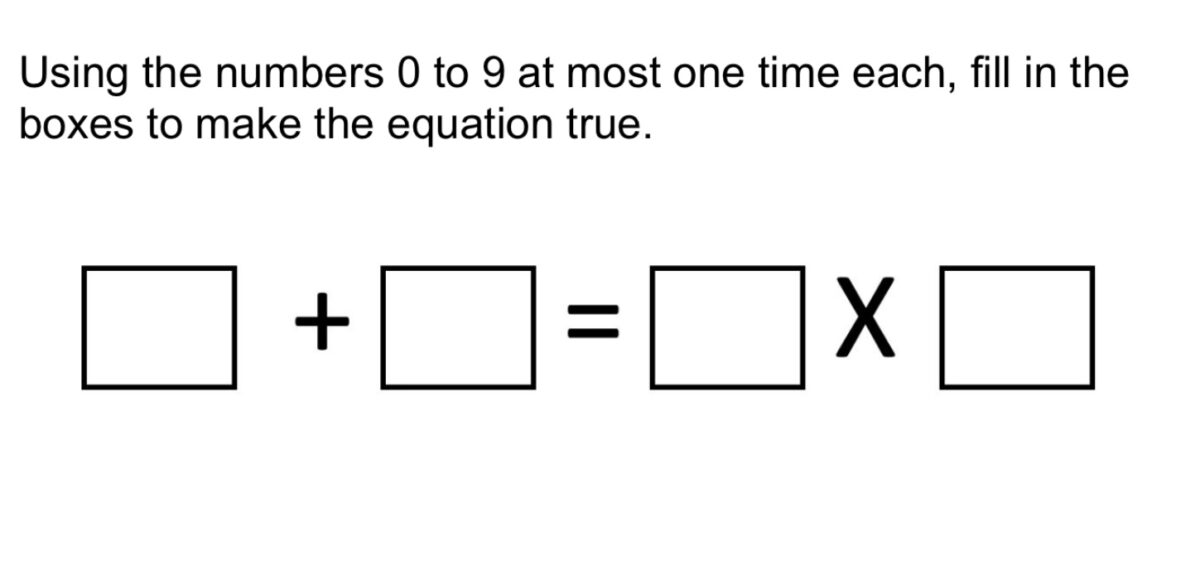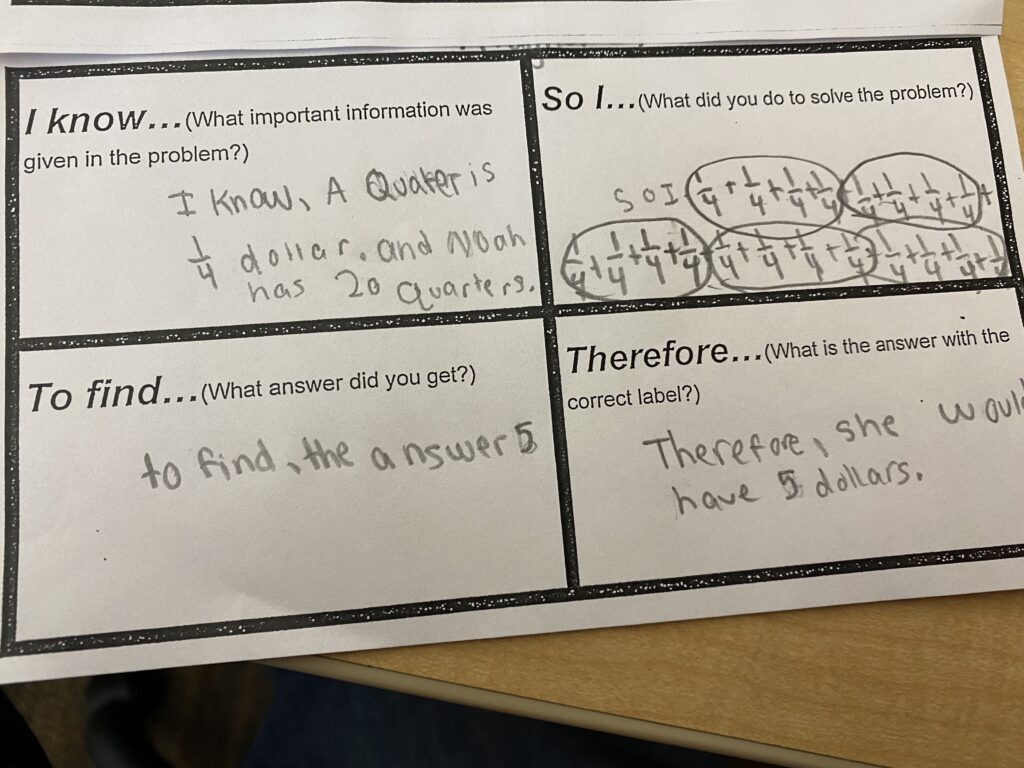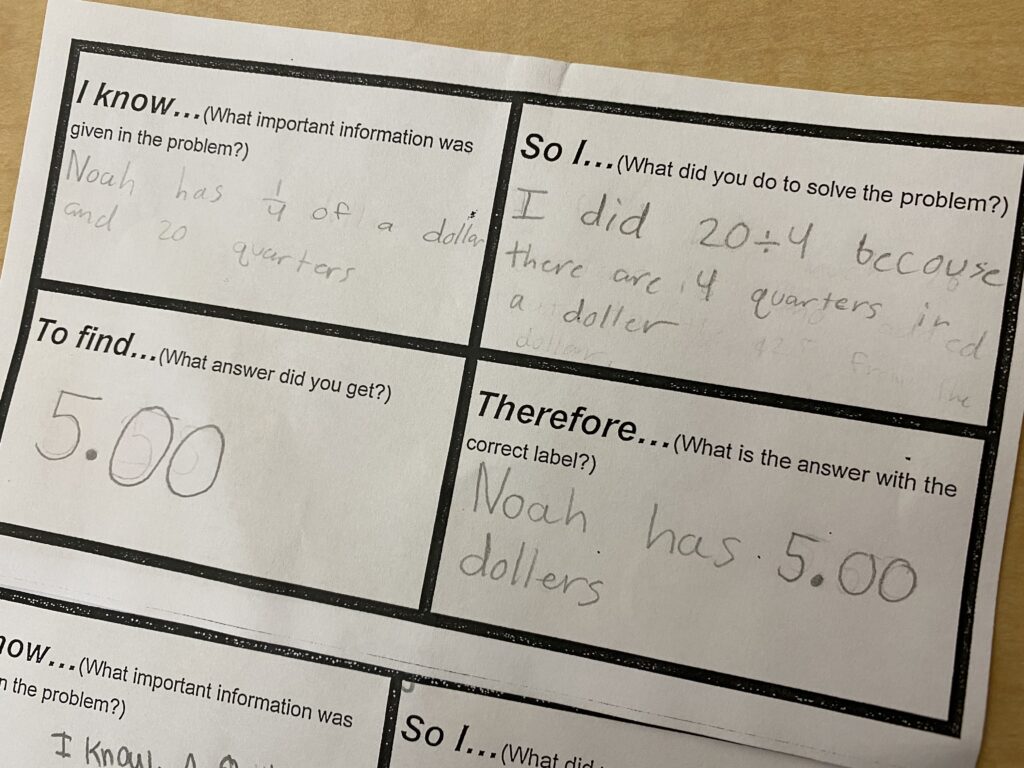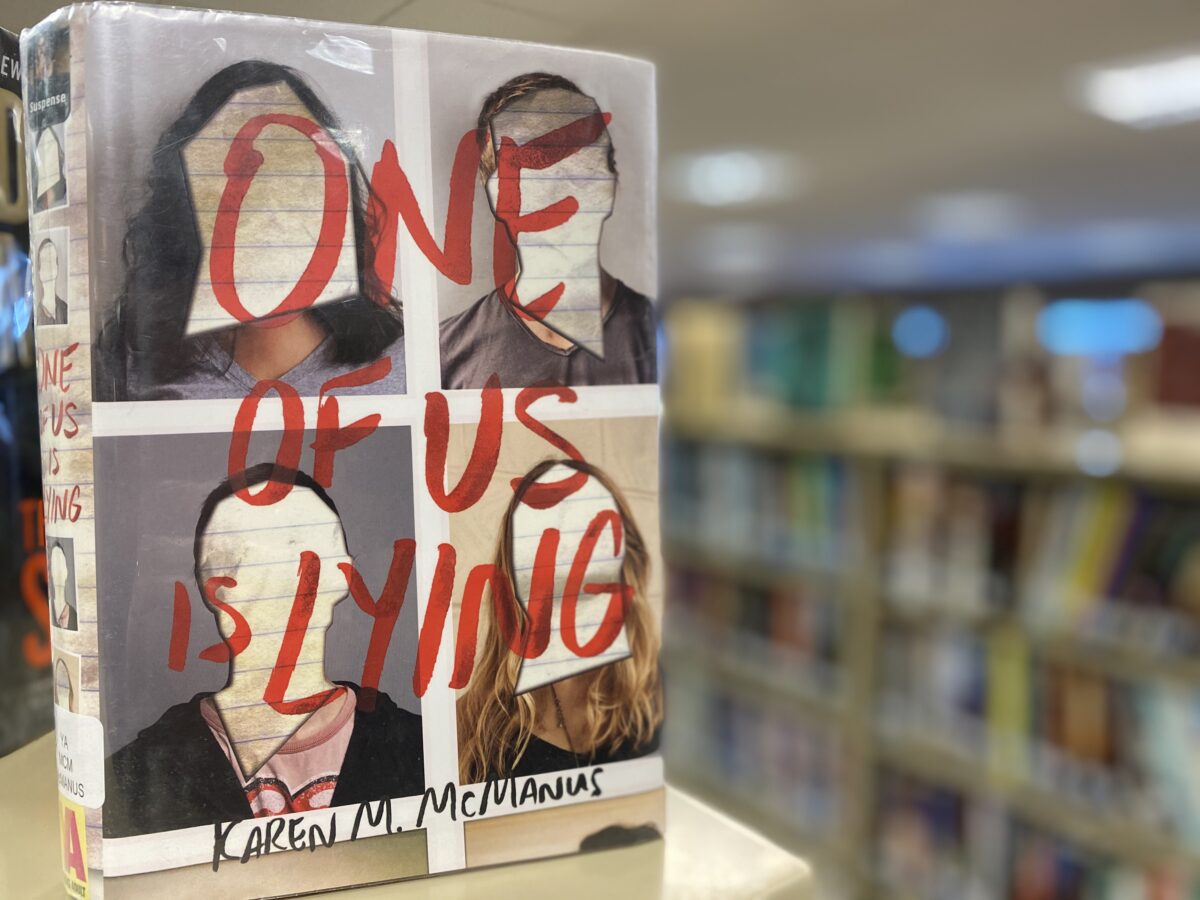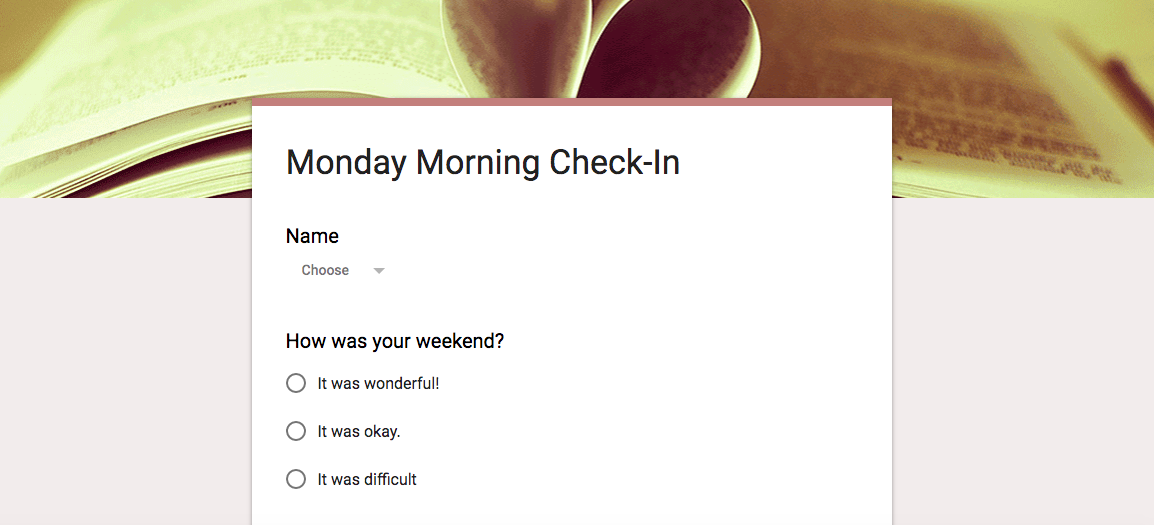That’s the problem I presented to my students today for our math warm-up. It seems like a basic problem, but the conversation it started was wonderful.
I got the idea for the problemfrom Open Middle. As his website states, most of these problems have:
- a closed beginning meaning that they all start with the same initial problem;
- a closed end meaning they all end with the same answer;
- an “open middle” meaning that there are multiple ways to approach and ultimately solve the problem.
We started with this basic problem today. Students were given time to work on their whiteboard and talk with a partner before we shared as a class. One student, Jimmy, pointed to his partner and asked, “Mr. Rashid, we have two different answers. Can we have different answers and both be right?”
My answer was, “Can you prove that you’re both correct?”
Jimmy and his partner took turns explaining why each answer was correct. Then I asked, “Jimmy, can you have different answers and both be right?”
He smiled and said yes.
Students were excited to share their thinking with the class. Each student shared their answer and explained how they solved the problem. We will increase the complexity of the problems as we move forward, but this was a great way to introduce the idea to students and help them understand the process.

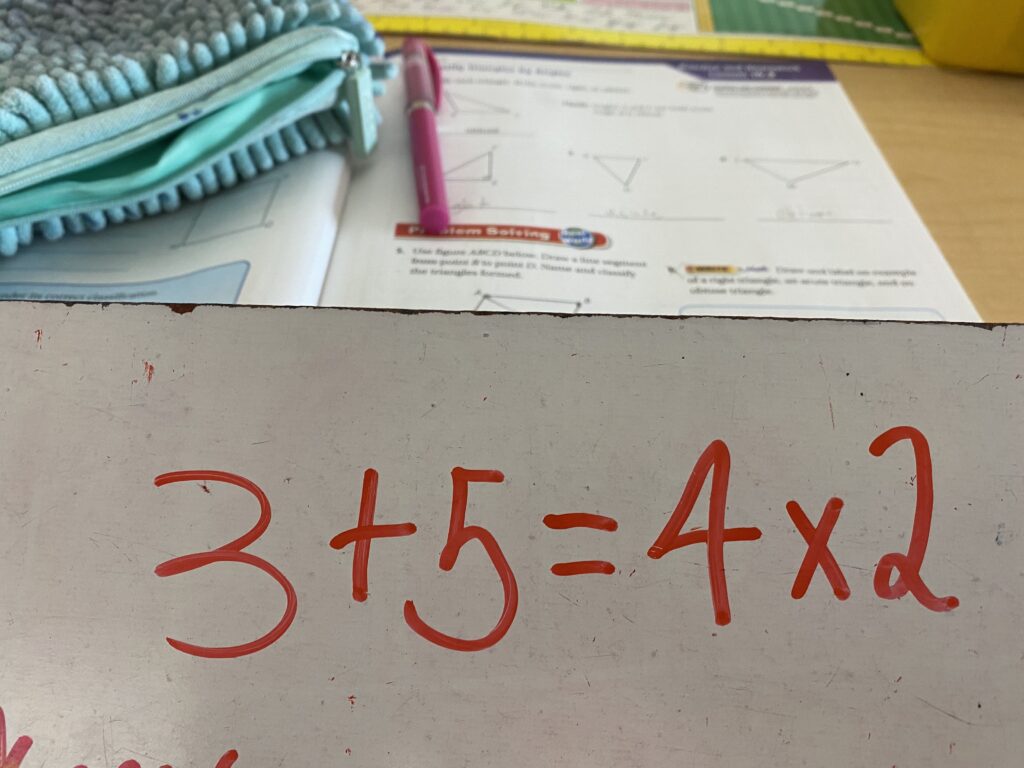
There are many great examples on the Open Middle website. They are organized by grade level and standard. This resource makes diving into the process a little easier. I hope it works as well for you as it did for my students.
